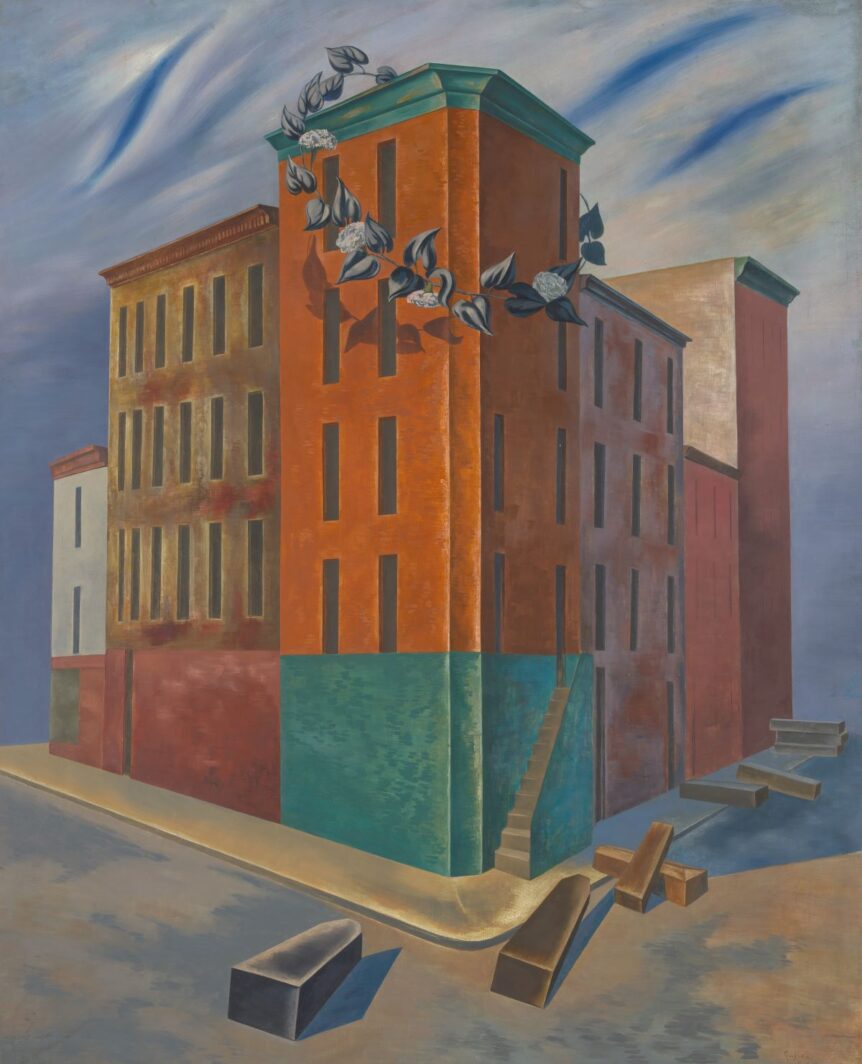
During the years of the Great Depression, hundreds of American artists found a purpose in their work. The notion of “art for art’s sake” was abandoned; art had a job to do: to educate, to exhort, to promote an agenda, and more. Whether employed by the WPA, or a political group, or on their own, artists became activists.
A current exhibition at the Metropolitan Museum of Art, Art for the Millions: American Culture and Politics in the 1930s, examines the provocative art of the period and the messages it was intended to convey, and features more than one hundred works, including paintings, sculpture, prints, and photographs either drawn from the Met collection or on loan. “American artists witnessed astounding hardships in the 1930s and responded fervently,” says Met director Max Hollein. “This insightful exhibition serves as a poignant reminder of how artists then, like now, used their craft to connect with audiences, take action, and illuminate social ills.”

Some artists sought to uplift, with images that exalted labor—brawny workers toiling assiduously in factories and on farms. Others illustrated grim reality in prints depicting men standing in long lines, hoping for a job, or waiting for food in soup kitchens and breadlines. Still other artists used symbolism—sometimes relatively subtle, as with Georgia O’Keeffe’s series of paintings of cow and other animal skulls; sometimes not, as in O. Louis Guglielmi’s 1939 painting One Third of a Nation, which depicts an empty tenement building hung with an enormous funeral wreath, caskets scattered in the street.
There are optimistic paeans to the hope of progress through technology, as in Lester Beall’s striking, minimalist poster for the Rural Electrification Administration, as well as angry illustrations commissioned by leftist periodicals such as the New Masses, which are propaganda, but no less powerful for it.
But the most affecting artworks in the exhibition might be the least strident. These include the dignified watercolors produced for the Index of American Design, a program of the WPA that sought to document the best in regional craft and folk art, from carved eagles to face jugs. Or there is Charles Sheeler’s Americana from 1931, an oil on canvas depicting a room furnished with items such as a Shaker table, benches, and chair, a turned wooden bowl, and an assortment of rag rugs on the floor. It’s an image of such quiet, domestic simplicity that, in the Depression years, must have had a kind of heart-wrenching majesty.
Art for the Millions: American Culture and Politics in the 1930s • Metropolitan Museum of Art • to December 10 • metmuseum.org

